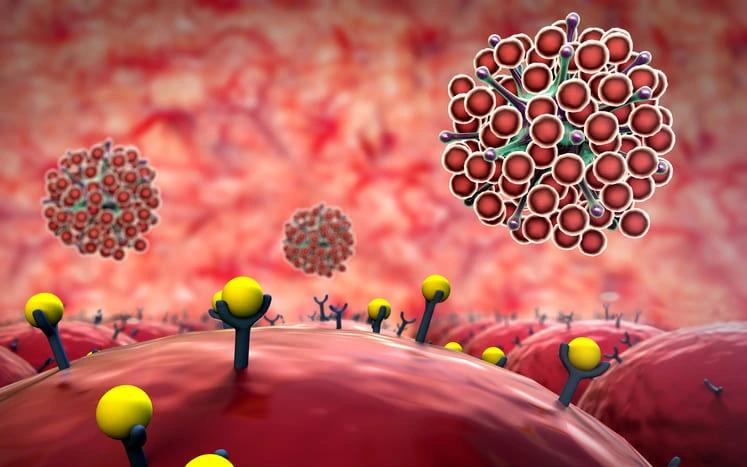KEY TAKEAWAYS
- The phase II trial aimed to validate the fractionation concept and test the hypothesis that further fractionation by starting chemotherapy on day 20 would reduce toxicity and lower NRM without increasing relapse risk.
- Pts with AML or MDS were randomized to receive busulfan on days -20 or -13. The rest of the regimen and GVHD prophylaxis were similar in both arms.
- The study found that starting busulfan one week earlier and giving it in smaller doses may reduce side effects and the risk of death.
Hematopoietic stem cell transplantation (HSCT) can cure leukemia but also have serious side effects. The study previously reported that giving busulfan in smaller doses and starting it one week earlier can reduce side effects and allow older patients(pts) to receive the treatment. Researchers aimed to validate the concept of fractionation and test the hypothesis that further fractionation by starting chemotherapy on day 20 would reduce toxicity and lower NRM without increasing relapse risk.
Pts aged 18 to 70 with AML or MDS, a matched related or unrelated donor, and adequate organ function were eligible for this study. They were randomly assigned to two groups; outpatient Bu 80mg/m2 on days -13 and -12 (shorter arm) and outpatient Bu 80mg/m2 on days -20 and -13 (longer arm). Both groups had similar regimens and graft-versus-host disease (GVHD) prevention strategies. This included fludarabine, cladribine, and Bu dosing to achieve a specific Bu exposure. In the later phase, both groups received venetoclax from days -22 to -3. GVHD prevention methods differed only in the choice of medications, with the first 29 patients receiving tacrolimus and mini-methotrexate and the rest receiving tacrolimus and cyclophosphamide. The key distinction between the two arms was the start date of the Busulfan administration.
About 116 pts were randomly assigned, with 59 in the day -13 arm and 57 in the day -20 arm. Median ages were 59 and 57, respectively, and around 70.7% had AML, with 41.4% undergoing transplantation in the first complete remission. Both groups were well-matched in terms of characteristics. Among the 67 surviving pts with a median follow-up of 48.9 months, the day -13 group had more grade ≥3 toxicities (93.2% vs. 73.7%, P= 0.005). This increased toxicity led to a reduced 3-year non-relapse mortality (NRM) rate (19% vs. 7%, P= 0.067). However, there was no significant difference in relapse rates (P= 0.99).
The study found that giving busulfan in smaller doses and starting it one week earlier may reduce side effects and the risk of death without increasing the risk of cancer recurrence.
Source: https://ascopubs.org/doi/abs/10.1200/JCO.2023.41.16_suppl.7051
Clinical Trial: https://classic.clinicaltrials.gov/ct2/show/NCT02250937
Uday R. Popat, Konstantinos Lontos, Roland L. Bassett, Amin Majid Alousi, Gheath Alatrash, Qaiser Bashir, Chitra M. Hosing, Jin Seon Im, Partow Kebriaei, David Marin, Rohtesh S. Mehta, Yago Nieto, Betul Oran, Amanda Leigh Olson, Muzaffar H. Qazilbash, Jeremy L Ramdial, Samer Ali Srour, Elizabeth J. Shpall, Richard E. Champlin, and Borje S Andersson. DOI: 10.1200/JCO.2023.41.16_suppl.7051 Journal of Clinical Oncology 41, no. 16_suppl (June 01, 2023) 7051-7051.



